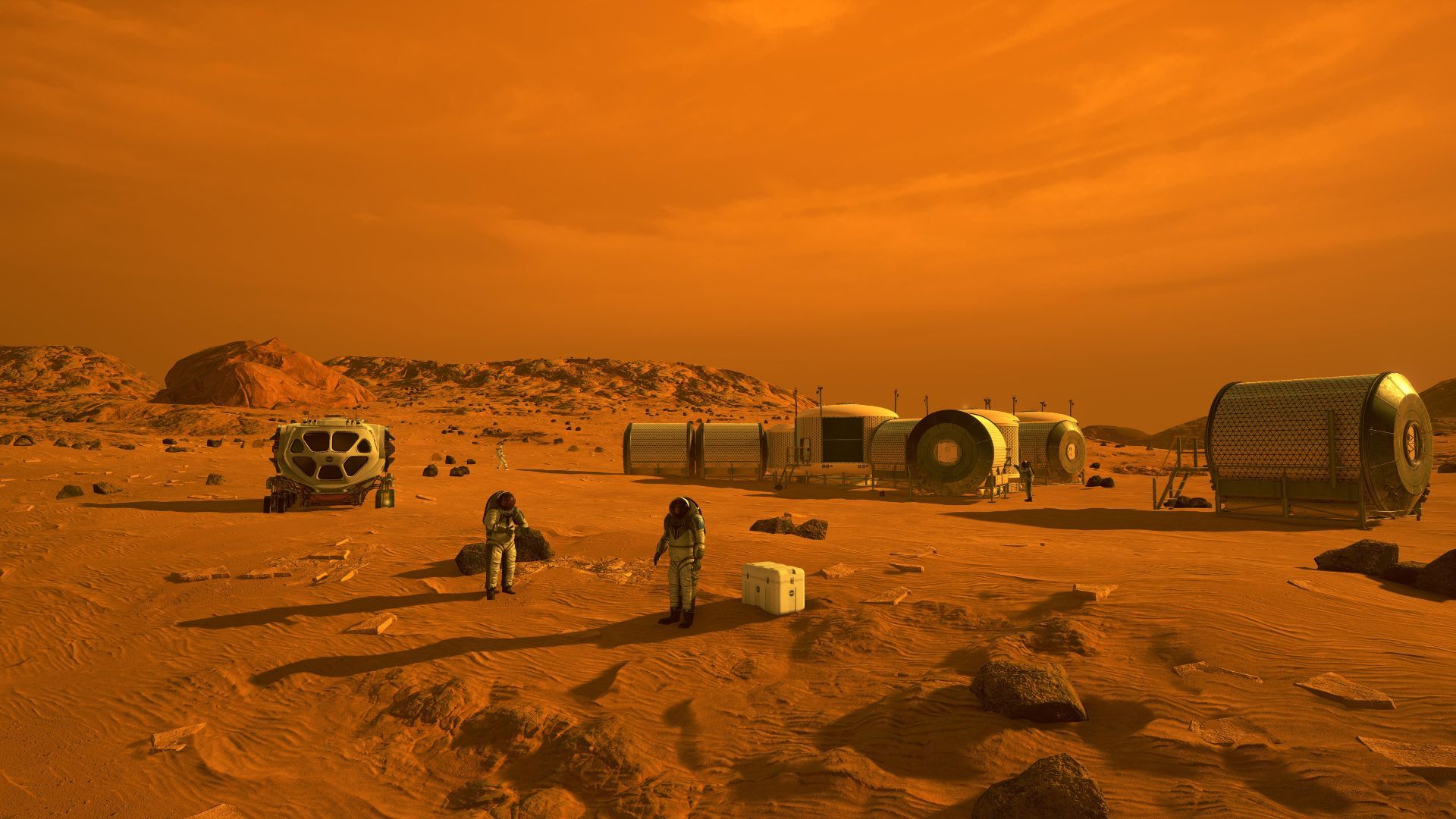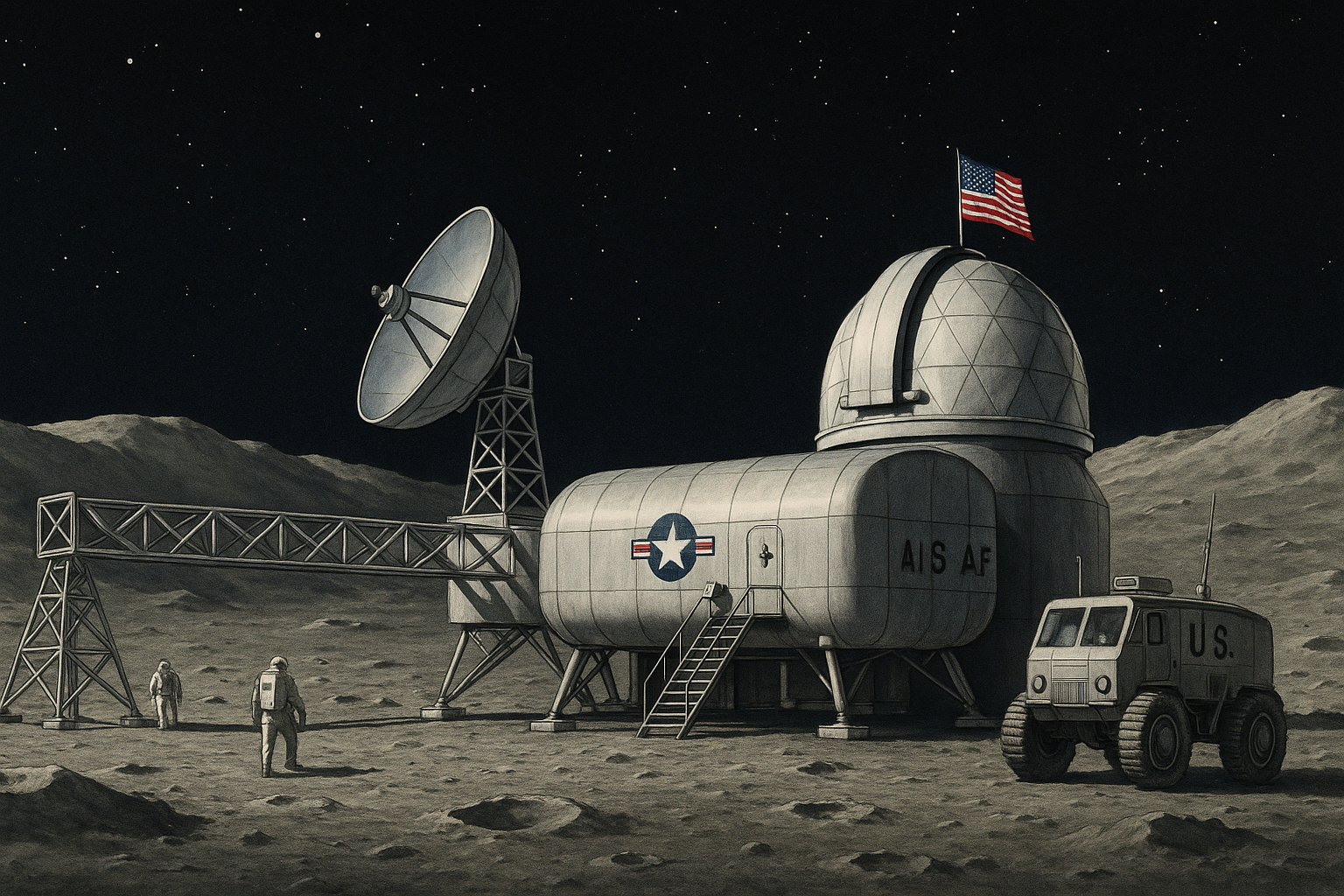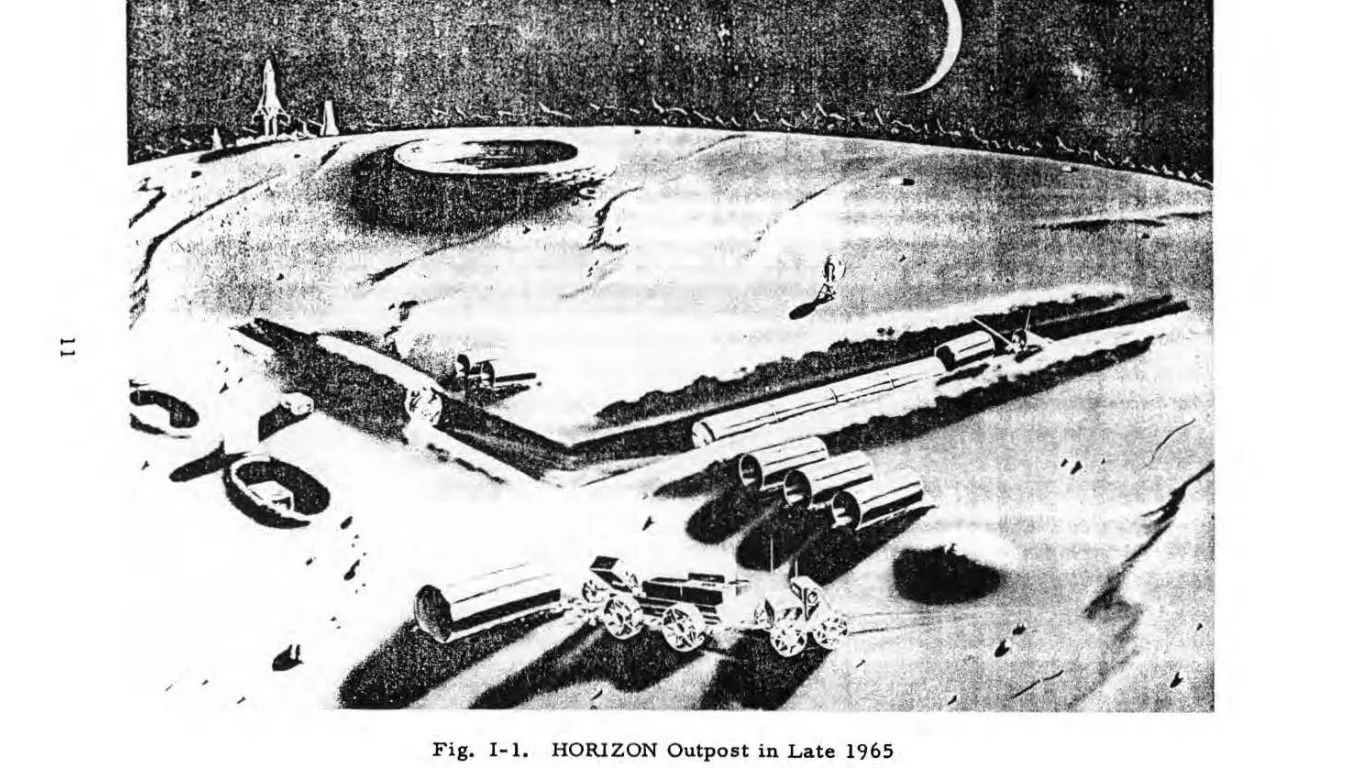Quick Links
- USAF’s S.R. 183 Lunar Observatory Study
- Gerard K. O’Neill’s Space Colonies at L5
You might be hearing about future plans to colonize Mars or establish a base on the moon, but these ideas are older than humankind’s first forays out of the atmosphere. In fact there have been several serious and semi-serious space colonization plans that obviously haven’t panned out because there are no space colonies.
That’s not to say we won’t see people living for at least some extended period of time on places like the Moon and Mars in this century, but it’s interesting to look at just how optimistic we’ve been in the past when it comes to leaving this pale blue dot behind.
5
USAF’s S.R. 183 Lunar Observatory Study
Everyone knows that the space race that led to Neil Armstrong setting foot on the surface of the Moon was largely driven by pressure coming from the Cold War between the United States and the former USSR. What you might not have known is that part of the fear that drove these moon missions was that one of the superpowers would establish a military base on the lunar surface.
It’s important to remember that control of space programs and space flight development wasn’t yet under the control of a civilian agency like NASA, but was still a military concern until 1958 when the NASA Act came into existence. So there was a military angle to every plan and consideration. Project Horizon, which I’ll take separately below, was one of these proposed lunar base projects, but there was also the US Air Force’s S.R. 183 Lunar Observatory Study.
Published in 1960, shortly after NASA was created, the paper outlines the steps and the timeline needed to get a base on the moon, manned by personnel and capable of bombing the surface of the Earth from the Moon. Funnily enough, the proposed target date to have the base operational was 1969, which happens to be the same year NASA put a man on the Moon.
There was also the Lunar Expedition Plan published the year after, with the following purpose:
The Lunar Expedition has as its objective manned exploration of the moon with the first manned landing and return in late 1967. This one achievement if accomplished before the USSR, will serve to demonstrate conclusively that this nation possesses the capability to win future competition in technology. No space achievement short of this goal will have equal technological significance, historical impact, or excite the entire world.
For a supposed “cold” war, everyone seemed to have a fire lit under them back then! Ironically, there doesn’t seem to be any evidence that the Soviets were even aiming for a similar lunar base. At least, if they were it hasn’t been declassified if US intelligence knew about it. So when it comes to lunar bases in particular, the US government might have been in a one-horse race without knowing it!
4
Project Horizon
While different branches of the armed forces all came up with their own space base ideas, the Army’s Project Horizon deserves its own discussion. The plan was presented shortly after NASA was formed, and, along with other military branches, the army was in competition to show they could get men on the moon before NASA or the other armed branches, so the goal was 1965 for a first landing and 1966 to have a 12-person complement.
By that time, the idea was to have a base with armed soldiers in an underground base. It would consist of cylinders sunk into the Moon’s surface, then covered in lunar regolith to protect against radiation.
The base would use nuclear power, the living quarters would be pressurized so the soldiers could just go about their day in regular clothes. The base was intended to be partially self-sufficient, with water and waste reclamation, air recycling, and hydroponic plant cultivation. The base could be defended, would have communication systems that may also have worked to spy on the USSR, and it’s implied that there may even have been nuclear weapons.
3
Mars One
The Mars One project was a private venture funded by a Dutch company that proclaimed in 2012 it would have humans on Mars by 2023. Clearly, that didn’t happen, and the company went bankrupt in 2019, but for a while there seemed to be some genuine hope.
Well, it’s debatable if Mars One was ever a serious project, and it might have been more like a reality TV exercise considering the way it all turned out. Either way, the project was dead by 2019.
It’s important to remember that this was a one-way trip. Which means that the 200,000 initial volunteers were signing up to leave Earth forever and would likely meet a swift end if they even ever made it to Mars. In the end, the total number of volunteers were whittled down to just 100 serious people, who would then undergo astronaut training, but thankfully the whole thing literally never got off the ground.
The actual plan wasn’t all that unreasonable on paper. First, there would be unmanned missions to drop supplies and robots that would scout out a place to start the colony, and then every two years four new Martians would arrive, gradually building up the base. The idea was to fund all of this using money from the reality TV content made documenting the whole thing, which I think severely underestimates just how expensive this sort of thing would be in the end.
In 2015, two MIT students carefully worked out just how unfeasible the whole thing was financially in a report that’s no longer up on the MIT website as of this writing, but you can still read about it in news articles such as Business Insider. Would this have worked with contemporary technology and enough money? I think probably not, but we’ll never know for sure!

Related
The Weird Paradox of Terraforming Mars
Is it a dream worth pursuing?
2
Gerard K. O’Neill’s Space Colonies at L5
It might be hard to imagine today, but before humans successfully landed on the Moon there was genuine skepticism that it could be done, and despite the best people in the world working on the problem, there was a significant chance the Apollo mission could have ended in disaster, with numerous chances for things going wrong at every point of the journey. After human feet actually touched the lunar surface, things changed. In the 1970s it wasn’t about whether we could reach space, but how we could build on that achievement over the long term.
It’s in this context that Princeton professor Gerard K. O’Neill put forward the idea that we shouldn’t just visit space, but that we should live there. In 1974, he published his first paper on the topic titled The Colonization of Space where the good professor literally did the math on what would be needed to have habitats in space where people could live.
Lagrange points are sweet spots in space between large bodies with significant gravitational fields that allow for something like a space habitat to remain stationary and stable with little if any energy requirements to maintain its position relative to those bodies. L5 is one of those stable points in the Earth-Moon system, and so it’s a good candidate to build an O’Neill-type habitat.
The most iconic habitat design is the O’Neill Cylinder, also called the “Island 3” type colony. It’s made from two massive counter-rotating cylinders, each between 5-20 miles long. The rotation would provide artificial gravity, which is crucial to any permanent human habitat. These colonies would house between 10,000 and 1,000,000 people and would be built from material already in space, such as asteroids, rather than taken from the surface of Earth. The whole thing is really well-thought-out, and I recommend anyone interested in the idea of artifical habitats in space read it. Of course, O’Nell did all this theoretical work with the knowledge and tachnology of the 70s, but even so there are many ingenious ideas here.
1
Floating Cities on Venus
When looking for a nice spot to put down roots in our solar system, Venus is probably close to the bottom of the list of habitability. The initial interest in Venus happened before the Soviet Venera probes brought back hard data about Venus that showed it was even worse than the outback of Australia.

Related
The 5 Most Brutal Places For a Vacation in Our Solar System
Even worse than Jacksonville.
However, by the 1970s, scientists realised that while the surface of Venus was completely inhospitable to Earth-like life, there were layers in the thick atmosphere of the planet that were actually closer to Earth’s surface when it comes to temperature and pressure. So why not make floating cities that sit at this level?
One of the first to propose this was Soviet engineer and science fiction writer Sergei Zhitomirsky in 1971, who described the concept of “Floating Islands of Venus”. The idea wouldn’t really go any further than daydreaming for many decades, until 2013 when a paper titled Colonization of Venus was published by Geoffrey A. Landis from the NASA Glenn Research Center.
In the paper he proposes that:
human exploration of Venus could take place from aerostat vehicles in the atmosphere, and that in the long term, permanent settlements could be made in the form of cities designed to float at about fifty kilometer altitude in the atmosphere of Venus.
There’s also an interesting conference paper by Landis titled Settling Venus: A City in the Clouds?, which is where that wonderful concept artwork above comes from.
So, who knows? With advances in technology and the further privatization of space exploration, you might just have the option to book a holiday in a floating Venusian hotel some day!
For all of human history, until this very last sliver of time, humans have been stuck on the Earth. In this century, we’ll probably see humans living in space for longer stretches of time, further away from and more independent of the Earth. Whether we’ll ever permanently colonize other planets or build Halo-style artifical habitats is anyone’s guess, but maybe one of these early colonization ideas might still happen. It’s anyone’s game at this point.




![Visualization of the High Altitude Venus Operational Concept ("HAVOC") concept for human exploration of Venus [7], showing the airship (left), with a long-duration human habitat in the background.](https://static1.howtogeekimages.com/wordpress/wp-content/uploads/2025/05/sualization-of-the-high-altitude-venus-operational-concept-havoc-concept-for-human.png)





Leave a Comment
Your email address will not be published. Required fields are marked *